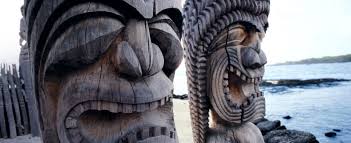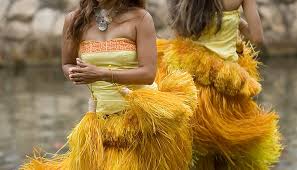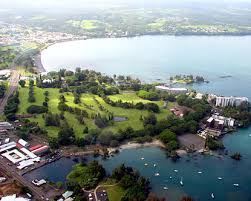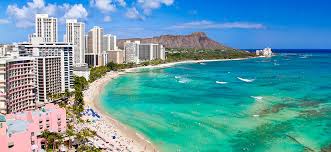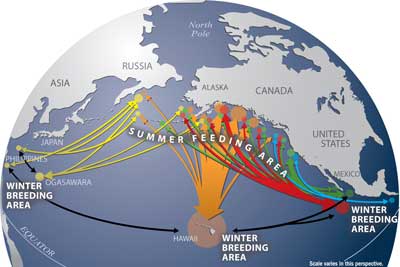Kelli, my Zimbabwean African child, is sailing as a Beauty Specialist on a South Sea Cruise from San Diego to Hawai’i and Tahiti this month…
This is one of her orchid photos from the Hawai’i Botanical Gardens…
 What wonderful culture in store for her!
What wonderful culture in store for her!
art….
and more dance…!
First stop, Hilo Hawaii………….
The landscape of Hilo, on the Big Island of Hawaii, is diverse. Beaches of black, gray, brown and white sand give way to mountains and dramatic waterfalls.
Hilo’s Pana’ewa Rainforest Zoo is the only U.S. zoo in a tropical rainforest. A day trip away are snow-capped Mauna Kea and Mauna Loa, with observatories near 11,000 feet on both mountains, and Kilauea Caldera, an active volcano.
Back in town are a farmer’s market, restaurants, shopping and banyan trees planted by celebrities and politicians.
Then Honolulu….
then Lahaina (Maui, Hawaii)………………
Here are Kelli’s stunning photos of orchids in the Botanic Gardens….
Delicate beauties….
Flowers fit for a wedding indeed…..an announcement has been made!
(See my next post for some stunning news!!!!)
Next, Bora Bora, an island of French Polynesia, which is an overseas collectivity of France in the Pacific Ocean. The island, located about 230 kilometres (143 miles) northwest of Papeete, is surrounded by a lagoon and a barrier reef. In the centre of the island are the remnants of an extinct volcano rising to two peaks, Mount Pahia and Mount Otemanu, the highest point at 727 metres (2,385 feet).
Bora Bora is a major international tourist destination. Produce of the island is mostly limited to what can be obtained from the sea and the plentiful coconut trees, which were historically of economic importance for copra.
The island was inhabited by Polynesian settlers around the 4th century AD. James Cook sighted the island in 1770 and landed that same year. Bora Bora was an independent kingdom until 1888 when its last queen Teriimaevarua III was forced to abdicate by the French who annexed the island as a colony.
Over the last few years several resorts consisting of over-the-water bungalows ,have been built on motu (small islands, from Tahitian) surrounding the lagoon,extending on stilts over the lagoon.
Snorkeling and scuba diving in and around the lagoon of Bora Bora are popular activities. Many species of sharks and rays inhabit the surrounding body of water.
Onto
Tahiti is the largest in a chain of islands that make up French Polynesia.
 The name can either refer to the main island or the entire destination. Commonly referred to as The Islands of Tahiti, French Polynesia is a collection of 118 islands and atolls scattered across an impressive nautical surface area the size of Western Europe. Still, these tiny islands—many of which remain uninhabited—make up a total landmass of only 1,600 square miles (4,100 sq. km).
The name can either refer to the main island or the entire destination. Commonly referred to as The Islands of Tahiti, French Polynesia is a collection of 118 islands and atolls scattered across an impressive nautical surface area the size of Western Europe. Still, these tiny islands—many of which remain uninhabited—make up a total landmass of only 1,600 square miles (4,100 sq. km).
Papeete, based on Tahiti, is a vibrant and multicultural city with busy boulevards and a bustling harbor. The downtown municipal market, Le Marché, is an exciting place to purchase all things Tahiti including vanilla beans, monoi oil and colorful pareos. To live like a local, head to Vai’ete Square after sunset. This waterfront promenade comes to life at night when gourmet food trucks, Les Roulottes, open their windows to serve a range of affordable meals including Chinese food, French crépes, steak frites, fresh fish and pizza.
I am really hoping Kelli will see Humpback whales, since they visit Hawaiian waters each year from November to May with the peak of the season being from January to March.
The Hawaiian Islands Humpback Whale National Marine Sanctuary was created by Congress in 1992 to protect humpback whales and their habitat in Hawai`i. The sanctuary, which lies within the shallow (less than 600 feet), warm waters surrounding the main Hawaiian Islands, constitutes one of the world’s most important humpback whale habitats.
Through education, outreach, research and resource protection activities, the sanctuary strives to protect humpback whales and their habitat in Hawai`i.
Humpback whales, now an endgangered species, were plentiful in oceans worldwide before the global population was depleted by commercial whaling at the start of the 20th century. In 1993 it was estimated that there were 6,000 whales in the North Pacific Ocean, and that 4,000 of those came to Hawaiʻi. Through an international ban on commercial whaling and protections under the Endangered Species Act and the Marine Mammal Protection Act, the North Pacific humpback whale population now numbers more than 21,000. The population of humpback whales that uses Hawaiʻi’s waters as their principle wintering ground is likely more than 10,000 animals. This number is based on a comprehensive research effort that occurred between 2004 and 2006 that estimated the population at approximately 10,000 animals, and the likelihood that the population is still increasing at some unknown rate.
The North Pacific stock of humpback whales feed during the summer in northern waters (between approximate latitudes of 40-75° N). The cool, nutrient rich waters around Alaska provide ideal feeding locations. Humpback whales have plate-like bristles known as baleen in their mouth instead of teeth. They feed on krill and small schooling fishes, such as capelin and herring. A variety of feeding methods are used including bubble net feeding and lunge feeding. Humpbacks rarely feed in their wintering areas and it is not known if they feed along their migratory routes.
Hawai‘i is the only state in the United States where humpback whales mate, calve, and nurse their young.
Humpbacks may find Hawai‘i suitable because of the warm waters, the underwater visibility, the variety of ocean depths, and the lack of natural predators. Mothers can be seen breaching alongside their calves and males can be seen competing with one another for females in fierce head-to-head battles.
After Papeete comes Fanning Island, Fanning Island is one of the most remote places on earth, an isolated speck in the vast South Pacific well over 1,000 miles south of Hawaii and more than 500 miles north of Tahiti. Fanning is part of the Republic of Kiribati and its capital, Tarawa, lies far to the west, more than 2,000 miles away, with nothing but open water in between. The 1,200 residents of Fanning (or it might be 1,600 or maybe 2,000; it keeps changing and no one has made an accurate count) exist amicably in the dreamy, time-honored fashion of South Pacific paradises.
A handsome, brown-skinned people, they are polite, gentle and shy. They live in grass shacks, or, more accurately, shacks of coconut fronds and pandanus leaves. The traditional dress, for men and women, is a sarong. They live off the land and the sea: fish, coconuts, taro, pumpkin and papaya. They have no telephones, no running water, no electricity (and by extension, no computers, no television, no video games, no movies).
The weather prohibits Kelli’s ship from making port!
They press on to Maquesas Islands :
Nuku Hiva (sometimes erroneously spelled “Nukahiva”) is the largest of the Marquesas Islands in French Polynesia, an overseas territory of France in the Pacific Ocean.
The Marquesas are as wild and untamed as the horses roaming freely through their rugged terrain. Unlike the other islands in French Polynesia, there are no lagoons or protected coral reefs surrounding these landscapes. Instead, steep volcanic mountains plunge straight into the pounding Pacific Ocean, while jagged ridges lay interspersed between deep valleys and thriving jungles.
The Marquesas Archipelago is one of the most remote island groups in the world. These distant volcanic islands are located farther away from a continental landmass than any other island in existence.
Throughout the islands, there are many archaeological and ceremonial sites including houses, shrines, stone statues, agricultural terraces and burial grounds that testify to the existence of an ancient civilization.
Nuku Hiva, located on the northwestern edge, is the largest of the Marquesas Islands. Known as the Mystical Island, it is home to many rare and magnificent attractions such as the black sand beach of Anaho; Hakaui Valley waterfall, the third tallest in the world; Cathedral of Notre Dame, which houses intricate stone and wooden carvings from each island; and countless underwater caverns that shelter an impressive variety of flora and fauna.
Maybe Kelli will get to watch a pod of melon-headed whales…..The melon-headed whale is actually a member of the dolphin family. They are usually found far offshore beyond the continental shelf and only come close to shore when the surrounding waters are deep.
Melon-headed whales are extremely social creatures, swimming in tightly packed herds of 100-500 animals, although they sometimes gather in their thousands. The species is generally shy of boats, but is known to bow-ride in areas where it is not harassed, and can be extremely demonstrative when it is not disturbed.


